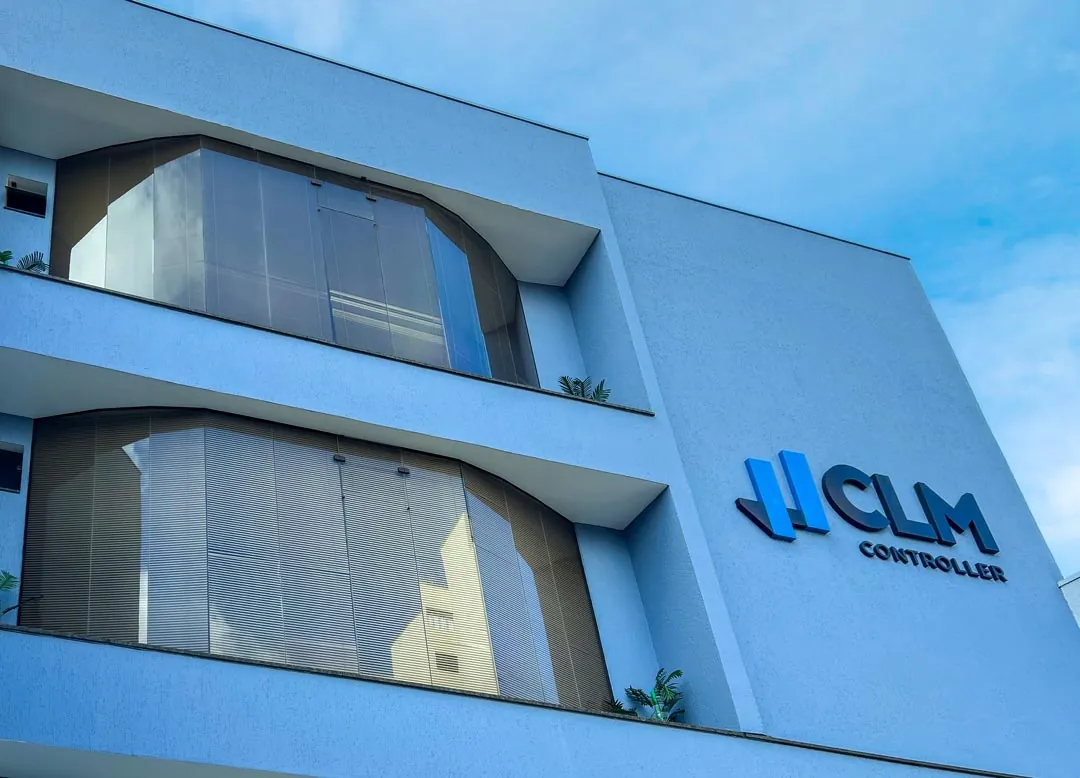O tax planning Real Profit is one of the most powerful tools a CFO or finance director can use to reduce taxes legally and improve the company's cash flow.
Unlike Simples Nacional or Lucro Presumido, in Lucro Real the tax burden is directly reflects the financial and operational decisions of the business. This means that every expense recorded, every credit used and every well-planned tax incentive can make a difference to the final amount of the IRPJ and CSLL.
Medium-sized and large companies that are already or need to be in the Real Profit system, usually because their turnover exceeds R$ 78 million or because they operate in specific sectors, find it difficult to make a profit. fertile ground for optimizing taxesas long as they have robust financial control and expert advice.
The following are 7 essential strategies for legally reducing taxesIt also shows how good planning, with the support of the CLM Controllercan generate consistent and predictable savings.
1. Use of all deductible expenses

One of the foundations of tax planning in Real Profit é maximize deductible expenses to reduce taxable income.
The IRPJ and CSLL are calculated on the adjusted net profitRevenue minus duly substantiated costs and expenses.
One of the foundations of tax planning in Real Profit é maximize deductible expenses to reduce taxable income.
The IRPJ and CSLL are calculated on the adjusted net profitRevenue minus duly substantiated costs and expenses.
What to consider
- Operating expensesWages, social charges, rent, electricity, transportation, maintenance of machinery and equipment.
- Financial expensesInterest on loans for working capital or investment, provided they are related to the company's activity.
- Depreciation of assetsFixed assets (machinery, vehicles, IT equipment) can be depreciated and recorded as an expense.
Good practices
- Classify each expense correctlyAvoid a legitimate expense being disregarded due to poor record keeping.
- Keep invoices and receiptsWithout proper documentation, the IRS can disallow the deduction.
- Have regular reviews with your accountantReviews are important to identify underutilized expenses, especially in administrative or support areas.
The experience of CLM Controller shows that many companies fail to deduct significant amounts simply due to misclassification or a lack of internal processes. With professional control, you can reduce IRPJ and CSLL without risk of assessment.
2. Offsetting tax losses
Another classic tax planning Real Profit is the offsetting tax losses. The legislation allows the company to offset up to 30% of adjusted net income of a period with accumulated losses from previous years, reducing the IRPJ and CSLL calculation basis.
How it works:
Suppose the company had accumulated R$ 2 million in losses in previous years. In the current year, it made a profit of R$ 1 million. Under the 30% rule, it will be able to offset R$ 300 thousand, reducing its taxable profit to R$ 700 thousand.
Important precautions:
- Follow the control of tax losses and negative CSLL basis to ensure correct use.
- Plan profit distributionThe only way to compensate is to make sure that all the losses have been properly utilized.
- Keep the documentation for each financial year, as the IRS requires proof.
With the support of CLM Controller, you can create a well-structured compensation strategyThis ensures that the company only pays tax on its actual profit, without losing the right to use loss credits.
3. Non-cumulative PIS and Cofins credits
Companies in the non-cumulative regime can write off PIS and Cofins on various expenses and inputs used in the activity. It is an often underused opportunity to reduce the total tax burden.
Where to find credits:
- Electricity used in production;
- Third-party services essential to the production process or provision of services;
- Manufacturing inputs and goods for resale;
- Freight costs when purchasing inputs and selling products.
Practical strategy:
- Implement a credit control system that automatically identifies the items that can be used.
- Periodically review your expenses with your accountant, as legislation is dynamic and some credits can be included or extended.
- Record the destination of each input correctly to avoid questions from the tax authorities.
A review of PIS and Cofins credits carried out by the team at CLM Controller has already generated saving millions of reais in taxes for clients, showing the potential of this strategy when applied carefully.
4. Specific tax benefits and incentives

Brazil has several tax incentives for companies investing in strategic areas, and many of them apply to the Real Profit regime.
Taking advantage of these benefits is a legitimate way of reducing taxes and contribute to social, cultural or technological development.
Main incentives:
- Good Law: For companies investing in research and technological developmentallowing an additional deduction from the IRPJ.
- Culture and sport incentive laws: How Rouanet Law or the Sports Incentive Law, which allow part of the tax due to be deducted.
- Regional development programsIn some states, there are special ICMS regimes or presumed credits for strategic sectors.
How to make the most of it:
- Assess whether the company has eligible projects or investments and plan your paperwork in advance.
- Count on specialized accounting advice to ensure the correct framework and avoid disallowances.
- Follow the membership deadlines of each program so as not to miss out on deduction opportunities.
In addition to saving taxes, these initiatives reinforce the institutional positioning of the company, associating the brand with relevant causes.
5. Strategic choice of calculation period: quarterly or annually
In Real Profit, the company can opt for the Annual or quarterly Real Profit. This choice, often neglected, is a tax planning strategy which directly impacts cash flow and the possibility of offsetting losses.
Quarterly Real Profit:
- IRPJ and CSLL are calculated every quarter.
- If there's a loss in one quarter, it can't be offset by a profit from another quarter in the same year.
- Good option for companies with constant and predictable profit.
Annual Real Profit:
- IRPJ and CSLL are calculated at the end of the year, with monthly payments by estimate.
- Allows you to offset losses from one month against profits from anotheroptimizing the tax burden.
- Ideal for companies with seasonality or irregular profits.
A CLM Controller recommends a detailed analysis of historical results and projections to choose the most advantageous model.
So far, we've explained five fundamental pillars for the tax planning Real Profit:
- Use of deductible expenses;
- Offsetting tax losses;
- PIS/Cofins credits;
- Tax incentives;
- Choice of calculation period.
Now, let's move on to two complementary strategiesIn addition, it presents the strategic role of the company's tax management system. CLM Controller in the implementation of robust tax planning tailored to each company.
6. Pro-labore vs. profit distribution: balancing partner taxation
One of the most important decisions for Real Profit companies is to correctly define the partners' pro-labour and the amount allocated to distribution of profits.
This balance has a direct impact on the total taxes paid, both by the company and by the partners.
Understanding the concepts:
- Pro-labore: Monthly remuneration paid to partners who effectively work in the management or operation of the company. It is subject to INSS and income tax withheld at source according to the progressive table.
- Distribution of profits: The portion of net accounting profit, calculated and recorded in the balance sheet, that can be distributed to shareholders exempt from income tax (provided there is regular bookkeeping).
Why balance:
If the pro-labore is too high, the company overpays, increasing the tax burden.
On the other hand, a pro-labore that is too low can lead to questions from the tax authorities, as the partner who works in the business must have remuneration that is compatible with their role.
Practical strategy:
- Define a pro-labore appropriate to the market and the position held by the partner, ensuring that the social security contribution is sufficient for future benefits (retirement, sick pay).
- Allocate surplus profits to exempt distributionThis reduces the partners' personal income tax (IRPF).
- Maintain complete and up-to-date bookkeepingThis is a prerequisite for exemption from income tax on distributions.
With the support of CLM ControllerIn this way, it is possible to carry out a detailed analysis of the history of profits and the performance of each partner, creating a pro-labore and profit distribution policy that balances out tax savings and legal certainty.
7. Tax avoidance and corporate structuring: long-term planning
When we talk about Real Profit tax planningwe cannot ignore the strategies of tax avoidanceIn other words, the lawful use of legal alternatives to pay less tax. The key here is smart corporate structuringThis can generate significant savings in the long term.
What is tax avoidance?
Elision is different from evasion. Tax evasion is a crime (omitting prescriptions, falsifying documents), while the tax avoidance is totally legalconsisting of organize the company's operations so as to reduce the tax burdenwithin the legislation.
Examples of structuring:
- Opening branches in states with tax incentives: In some sectors, certain states grant ICMS reduction or benefits for companies that set up in their territories.
- Reframing of activities: Review the CNAEs to ensure that each operation is classified under the most advantageous and correct tax classification.
- Creation of a holding company: Centralize assets and results in one holding company can facilitate succession, reduce taxes on profits and protect strategic assets.
- Planned mergers and demergersIn cases of restructuring, there may be benefits from offsetting tax losses or regional incentives.
Essential care:
These strategies require long-term planning and a thorough knowledge of the law.
CLM Controller works with tax consultancy e CFO as a Serviceevaluating each alternative, calculating the fiscal impact and ensuring that all operations are within the lawwithout the risk of fines.
Why tax planning in Lucro Real requires specialized advice
As we have seen, the opportunities for reduce taxes in Real Profit are broad, but also complex. Each strategy requires a detailed analysis of the legislation, the company's financial reality and its sector.
Without the support of a specialized team, the company runs risks such as:
- Losing important tax creditsdue to lack of control or inadequate classification.
- Paying more tax than necessaryby not taking advantage of available incentives.
- Suffering notices and finesif the documentation does not comply.
Ideally, tax planning should be an ongoing process, reviewed periodically to adapt to changes in legislation and the market.
The role of CLM Controller in your tax planning
A CLM Controller Accounting goes far beyond basic compliance. Our team acts as a strategic partner to the CFO and the finance department, offering personalized tax advice to medium and large companies that are or need to be in the Real Profit system.
With a team specialized in tax legislation and advanced financial management, we offer:
- Complete diagnosis of the current tax burdenidentifying opportunities for immediate savings.
- Review of internal processes to maximize deductions, PIS/Cofins credits and offset tax losses.
- Tax avoidance planning and corporate structuringwith legal certainty and a long-term focus.
- CFO as a Serviceproviding ongoing strategic monitoring to ensure that the company pays only what is necessary, month by month.
This approach ensures that each strategy is customized to the company's realityallowing tax planning to become a real competitive edgeimproving cash flow and strengthening financial health.
Conclusion
O Real Profit tax planning is one of the greatest allies of companies that want to reduce taxes legally and safely.
By adopting strategies such as taking advantage of deductible expenses, offsetting tax losses, PIS/Cofins credits, using tax incentives, intelligently choosing the calculation period, balancing pro-labour and profit distribution and tax avoidance with corporate structuring, the company guarantees an optimized tax burden and greater competitiveness.
But every business is unique. What works for an industry may not be ideal for a technology company or a service provider.
So, having specialized tax advice is essential to apply these strategies safely and extract maximum savings.
Don't let your company pay more tax than necessary!
Count on expert advice from CLM Controller to set up a tailor-made tax plan and save money now! Our team is ready to help your company reduce taxes in Real Profit legally and strategically.









